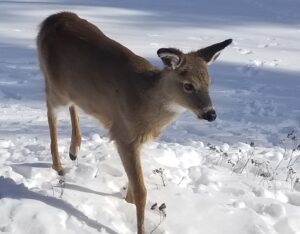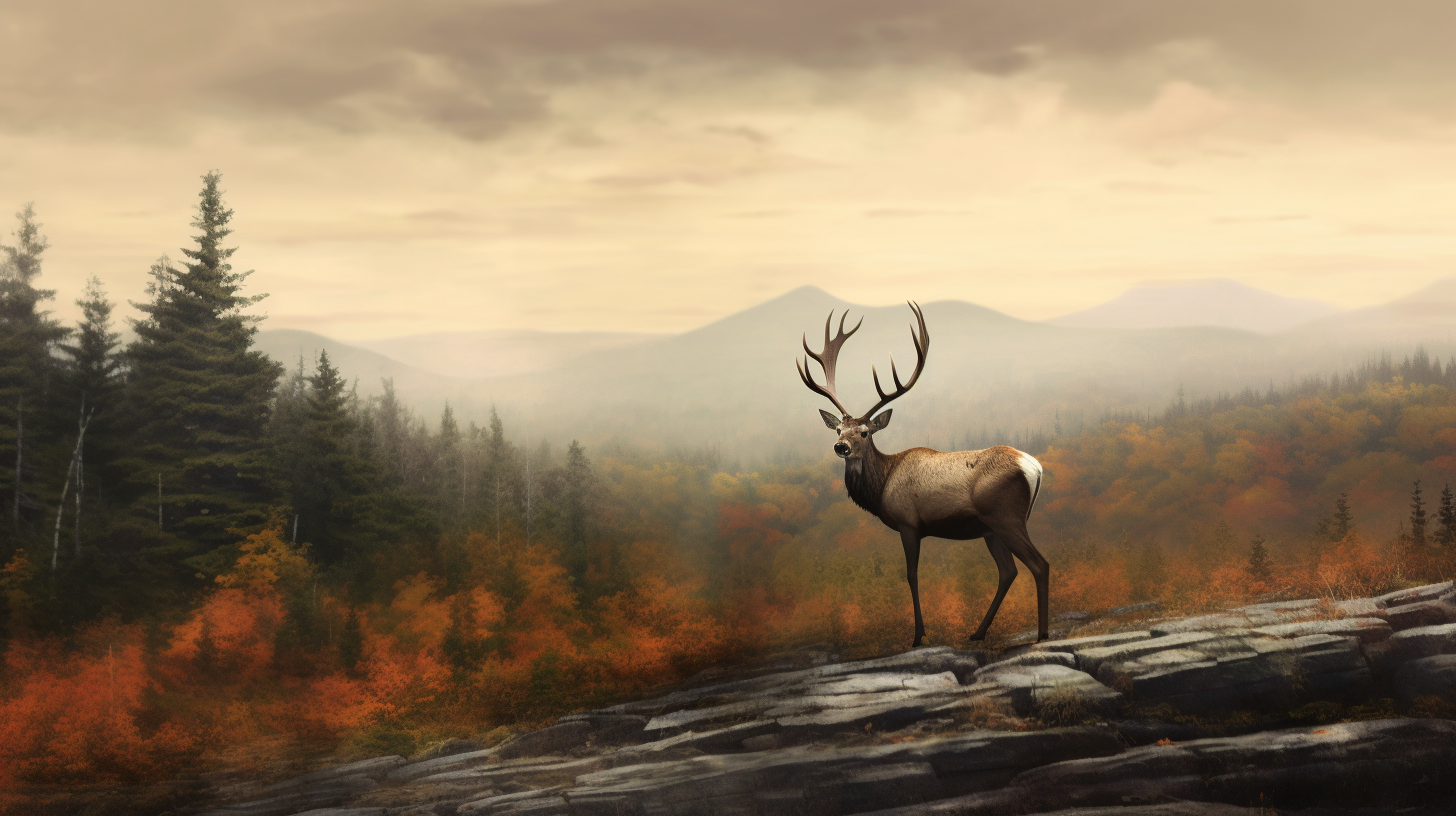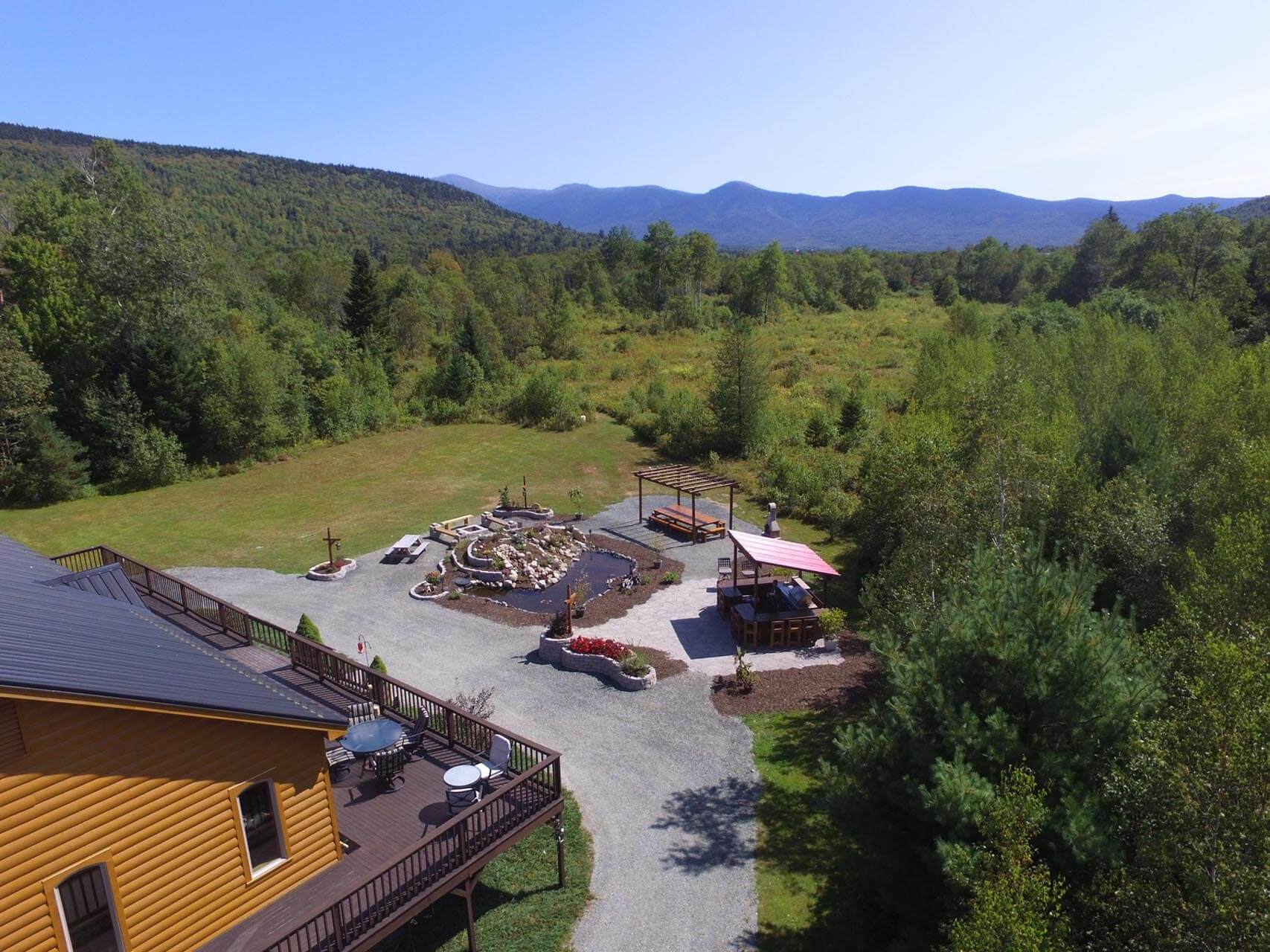  How do you let a deer know you like her? You fawn over her. |
The White Mountains are home to a variety of wildlife, including moose, black bears, white-tailed deer, foxes, and many other species. You can also find a variety of birds in the area, including bald eagles, hawks, and owls.
RENT A VACATION HOME IN THE WHITE MOUNTAINS!
Here are some tips for seeing or avoiding wildlife in the White Mountains:
- Be aware of your surroundings. Wildlife is most active at dawn and dusk, so be extra cautious during these times.
- Use binoculars or a spotting scope. This will allow you to see animals from a safe distance.
- Be patient. It may take some time to spot wildlife, so be patient and enjoy the scenery in the meantime.
- To avoid unwanted encounters during a hike, make noise. Talking, singing, and clapping can help to scare away nuisance animals before you see them.
Here are some specific places where you can spot wildlife in the White Mountains:
- The Kancamagus is a scenic road stretching 56.4 miles through the White Mountain National Forest. The byway has remained largely undeveloped, so it’s no surprise that this stretch of road yields wildlife sightings all year long. Moose, White-tailed deer, Black bears, and smaller critters such as Beavers, Raccoons, Porcupines, and Fishers (locally known as Fisher Cats), are common sights along this beautiful ride.
- The Route 302 stretch between Twin Mountain and the Highland Center, including the entire Bretton Woods area and the Base Station Road towards the cog rail are hot spot for moose sightings. Dusk and nighttime are the best time, so don’t forget a flashlight!
- Crawford Notch in Hart’s Location is a major pass through the NH’s White Mountains, and the state park itself spans 5,775 acres. Because of the expansive and unspoiled environment in and around the notch, many species of wildlife can be spotted including deer, black bears, wild turkeys, the occasional moose, and many more.
Safety Tips:
- Never approach wildlife. Moose and black bears can be dangerous if they feel threatened. Do not run away from bears, as this will trigger their chasing instinct. Loud noises and an aggressive stance are your best bet. On the other hand, moose are not predators and will generally not chase you if you walk away.
- Do not feed wildlife. This can make them dependent on humans and can lead to dangerous situations.
- Stay on designated trails. This will help to protect wildlife habitat.
- Dispose of food and garbage properly. This will help to prevent animals from being attracted to your location.
By following these tips, you can help to ensure that you have a safe and enjoyable experience while watching wildlife in the White Mountains. And no matter how you experience it, viewing wildlife is a great way to get back to nature and learn about the amazing creatures that share our world.
Book your stay with us today and start exploring the natural beauty of the White Mountains!



